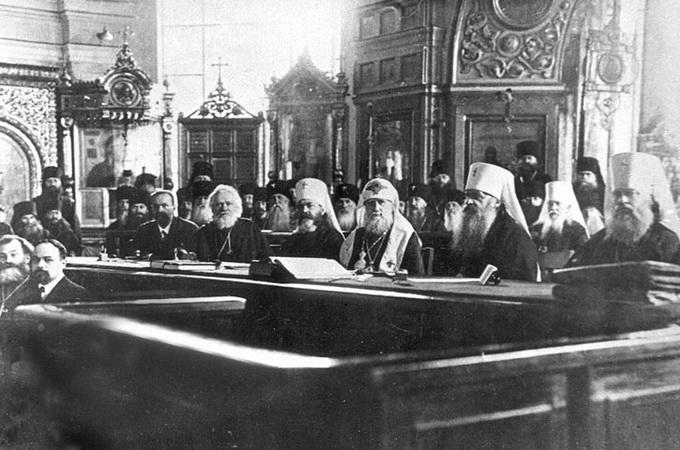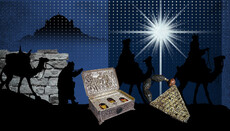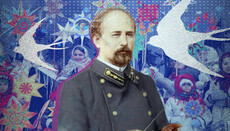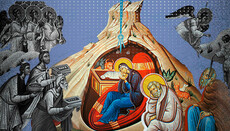100 Years of Persecution of the Church: to the anniversary of the Local Council of 1917-18

The UOJ prepared a series of materials about the events of a hundred years ago and historical parallels to what is happening in Ukraine today.
Background and preparation for the Council
These days, 100 years ago, direct work began on the convocation of the Council. On April 29, 1917, the Most Holy Synod decided to prepare for the Council and formed the Pre-Conciliar Board, which consisted of bishops, clergy, well-known scientists and public figures, as well as laymen – as many as 62 people. June 13 was the first meeting of this Council in Petrograd. And on July 5, 1917, the Most Holy Synod adopted a resolution on the opening of the Local Council in Moscow on the Feast of the Dormition of the Mother of God. Both the Council and its background are not only interesting and informative, but also suggest the historical parallels with today's time and events in our country.
Until 1917, the Local Council of the Russian Church was convocated for the last time in far 1689 under Peter the Great and Patriarch Joachim. After this, сonciliarism in the Church was forgotten for more than 200 years, and from 1700 on the Patriarch of the Russian Church was replaced by the Holy Synod, which in fact was headed by a secular man, the ober-procurator appointed by the tsar. The state built the Church into a system of bureaucratic bodies. The Synodal period began. This Peter’s reform of church administration projected to Russia the basic principles of Protestantism. As Protopresbyter Alexander Schmemann successfully formulated, "there was an understanding of the Church-State relationship, in which the Church, visible or earthly, at that time was thought to be the religious "projection" of the state itself".
The Church as a projection of the state ... After these words, the efforts of a modern Ukrainian state that attempts to create a single Church on the basis of falsely understood patriotism, nationalism and devotion to the "idea of Ukrainian statehood" are perceived in a different way. In this respect, P. Poroshenko tries to copy the policy of Peter I. All confessions agree with this, and only the Ukrainian Orthodox Church says that the Church serves Christ, and not "statehood".
At the beginning of the 20th century, the Russian empire was shaken by the 1905 revolution. One of the results of these events was the proclamation of religious freedoms. On April 17, 1905, Tsar Nicholas II's decree "On strengthening the foundations of religious tolerance" was issued, which caused a paradoxical situation. All religions and sects were made equal in rights with the Orthodox Church. But if other religious organizations could solve all their internal issues independently, the Russian Orthodox Church was still ruled by state officials, who often harmed it, sometimes even without masking it.
Another phenomenon that the turmoil of 1905 brought to the surface was Renovation. In St. Petersburg, a "circle of 32 priests" was formed, which in 1917 became the "All-Russian Union of Democratic Orthodox Clergy and Laymen", and later the "Living Church" to become one of the most destructive tools against the Orthodox Church in the hands of the Soviet government. The ideology of the Renovationists was then the same as the zealots of the renovation of the Ukrainian Orthodox Church have now: the struggle against clericalism, the democratization of governance, the modernization of worship, the transition from Church Slavonic to national languages, simplification of everyday life and canonical indulgences for the clergy and also the demonstrative loyalty to the new Soviet government and accusations of the Patriarch's Church of subversive activities against the state. Compare this with the statements of contemporary liberal religious figures, and everything will become clear.
So, the Russian Orthodox Church after 1905 proved to be the most powerless in the state. It was no longer granted any privileges, but it was still under pressure from secular authorities. In these circumstances, the convention of the Local Council becomes an urgent necessity for the Church.
On January 16, 1906, Emperor Nicholas II for the preparation for the Local Council established the Pre-Conciliar Presence, whose chairman was Metropolitan Anthony of St. Petersburg (Vadkovsky), and one of his deputies – Metropolitan of Moscow (future Metropolitan of Kiev), the Holy Martyr Vladimir (Bogoyavlensky). The Presence developed the following main proposals:
- Recognize the status of the main administrative body of the Russian Orthodox Church for the Local Council and call it at least once in ten years;
- In the inter-conciliar period, the Church should be governed by the Synod, elected by the Council, and not by the emperor;
- The head of the Synod must be the first hierarch in the status of patriarch;
- Establish metropolitan districts, which unite several eparchies;
- Expand the administrative autonomy of the eparchies;
- Introduce the electivity of the episcopate: at the Council of Bishops or eparchial assemblies.
The Presence report was submitted to Nicholas II, who on April 25, 1907 decided on it: "Do not convene the Council yet." However, in 1912 he allowed the Holy Synod to establish the Pre-Conciliar Meeting, which continued to work on the materials of the Pre-Conciliar Presence on the issues of church reform. With the outbreak of the First World War in 1914, the Meeting ceased its work.
On March 2, 1917, the day of the abdication of Emperor Nicholas II, in the village of Kolomenskoye near Moscow, a miraculous phenomenon of the icon of the Mother of God "Derzhavnaya" ("Reigning") occurred. The Most Holy Theotokos revealed to our people, entering the path of the suffering on the cross, their motherly love and intercession.
The Provisional Government that came to power further increased the pressure on the Church. The Ober-Procurator of the Synod was appointed Vladimir Nikolaevich Lvov, an ardent supporter of Renovationism. He began his work in this position with the mass layoffs of the episcopate. Of all the members of the Synod, only Archbishop Sergius (Stragorodsky) (future Patriarch) remained. To protests against such arbitrariness, Lvov replied: "I am expelling the bishops, for the people demand it."
The people demand, public opinion, needs of society ... We know this, don’t we? The Provisional Government carried out an anti-church activity quite openly: parochial schools were taken away from the Church, the teaching of the Law of God in schools and gymnasiums became optional, or even excluded from the curriculum; from the age of 14 freedom of religious self-identification was proclaimed.
In such conditions on July 5, the Holy Synod decided to open the Local Council in Moscow on the feast of the Assumption of the Blessed Virgin. The delegates of the Council were elected in three stages: parishes elected delegates to congregational assemblies, which in their turn elected delegates to eparchial congresses, and eparchial congresses elected members of the Council.
On July 24, 1917, the Synod sent invitations to primates of the Local Orthodox Churches to come to the Council, and two days earlier, on July 22, – a special Message about the events in the country. Its words sound absolutely special for us today: "Theft, robbery, assaults, violence and aggravated party and political struggle became an asset of our new life and placed in the people anger and discord, which led to an internal fratricidal war, repeated bloodshed. <...> Instead of brotherhood – the cooling of love, the decline of good, peaceful, fraternal social relations. The country has gone on the path of doom, and in the future that terrible abyss, which is filled with horrifying despair for all of us, awaits it unless turmoil, and disregard, and confusion cease ... from the Lord God."
To be continued in the next publications of the UOJ.
0
0
If you notice an error, select the required text and press Ctrl+Enter or Submit an error to report it to the editors.
Read also

Scrooge syndrome: Why "A Christmas Carol" is a book about us
29 December 14:37

Holy Family’s golden reserve: How Magi's Gifts saved them from poverty
26 December 15:21

Blood on the foundation of our native Christianity
24 December 10:00








